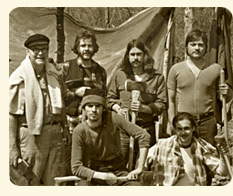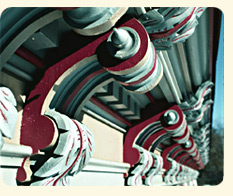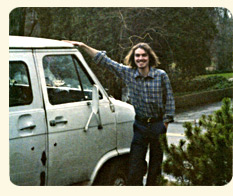
HISTORY
 Like many builders
of his generation, Scott McBride’s career took root in the fertile
soil of 1970s counter-culturalism. As part of the broader back-to-the-land
movement a craft revival was born, including the timber-frame renaissance,
and the wellsprings of the current green building movement. At the same time old house styles, including Victorian and Craftsman,
gained new respect as the hegemony of modern architecture ebbed and urban
pioneers began restoring brownstones and “painted ladies”.
Like many builders
of his generation, Scott McBride’s career took root in the fertile
soil of 1970s counter-culturalism. As part of the broader back-to-the-land
movement a craft revival was born, including the timber-frame renaissance,
and the wellsprings of the current green building movement. At the same time old house styles, including Victorian and Craftsman,
gained new respect as the hegemony of modern architecture ebbed and urban
pioneers began restoring brownstones and “painted ladies”.
 Scott grew up in Irvington, New York – a Hudson River town rich
in history and architecture. Named after America’s first famous
author Washington Irving (who resided there), Irvington’s landscape
was shaped first by Dutch settlers in the 1600’s. English and American
gentry built summer estates there in the eighteenth and nineteenth centuries
to escape the heat of New York City, including Alexander Hamilton’s
Nevis. These estates reached their zenith during the gilded age when industrial
magnates hired architects such as Stanford White to build their mansions,
carriage houses, and casinos.
Scott grew up in Irvington, New York – a Hudson River town rich
in history and architecture. Named after America’s first famous
author Washington Irving (who resided there), Irvington’s landscape
was shaped first by Dutch settlers in the 1600’s. English and American
gentry built summer estates there in the eighteenth and nineteenth centuries
to escape the heat of New York City, including Alexander Hamilton’s
Nevis. These estates reached their zenith during the gilded age when industrial
magnates hired architects such as Stanford White to build their mansions,
carriage houses, and casinos.
 After a brief stint at an Ivy League university in 1973 Scott began servicing
the needs of Irvington’s homeowners as a door-to-door handyman.
(It seemed like a perfectly logical career choice at the time.) His first
company vehicle was a wheel barrow, soon followed by a rusty but intrepid
Chevy van. The repair work Scott did on older homes
allowed him to observe the subtleties of how they deteriorated and the
systems that best prevented it. He also learned the intricacies of old
house anatomy “in the trenches”, deconstructing buildings
from each of the area’s varied architectural styles. 2008.
After a brief stint at an Ivy League university in 1973 Scott began servicing
the needs of Irvington’s homeowners as a door-to-door handyman.
(It seemed like a perfectly logical career choice at the time.) His first
company vehicle was a wheel barrow, soon followed by a rusty but intrepid
Chevy van. The repair work Scott did on older homes
allowed him to observe the subtleties of how they deteriorated and the
systems that best prevented it. He also learned the intricacies of old
house anatomy “in the trenches”, deconstructing buildings
from each of the area’s varied architectural styles. 2008.
At the dawn of the eighties Scott was fortunate to meet architect Stephen Tilly and his companion Elizabeth Martin. Scott worked on their vintage home, with it’s curious blend of neo-classical and craftsman influences. When Steve designed a shingle-style spec house Scott jumped at the opportunity to build it (see The Elms in project gallery). Scott’s first article for Fine Homebuilding Magazine focused on the complex roof framing required for this project. Several editors recall teetering on the brink of nervous breakdown in their attempt to make Scott’s treatise coherent.
back to top